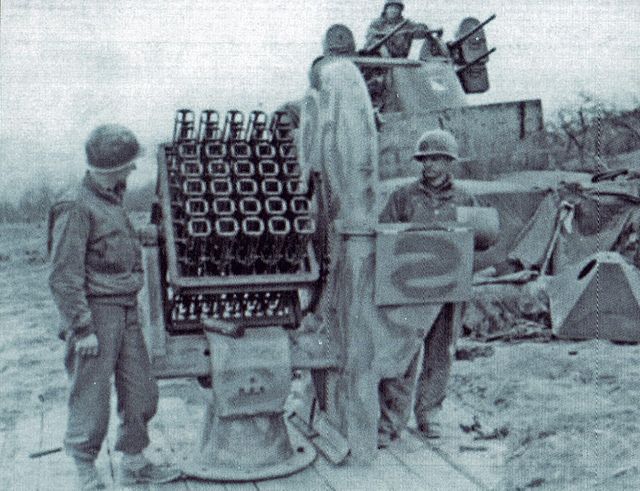The Henschel Hs 297 Föhn or 7.3 cm Raketen Sprenggranate was a small German surface-to-air rocket of the Second World War. The associated multiple rocket launcher was known as the 7.3 cm Föhn-Gerät.
A Föhn-Gerät rocket projector captured by US troops clearly shows the origin of its occasionally used nickname of "Beercrate flak".
Henschel Hs 297 on display at the Swedish Army Museum in Stockholm, Sweden
Side-view of the rocket launcher
7.3 cm Raketen Sprenggranate
The Bachem Ba 349 Natter was a World War II German point-defence rocket-powered interceptor, which was to be used in a very similar way to a manned surface-to-air missile. After a vertical take-off, which eliminated the need for airfields, most of the flight to the Allied bombers was to be controlled by an autopilot. The primary role of the relatively untrained pilot was to aim the aircraft at its target bomber and fire its armament of rockets. The pilot and the fuselage containing the rocket engine would then land using separate parachutes, while the nose section was disposable.
Bachem Ba 349 Natter
A captured Ba 349A1 Natter on display for Open Days at Freeman Field, Indiana September 1945. The swastikas are neither authentic nor positioned according to German military specifications.
Last preserved Bachem Ba 349 Natter launch pad in the Hasenholz.
Ruins of the two Bachem Ba 349 Natter launch pads in the Hasenholz.








